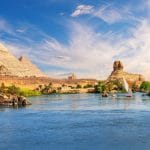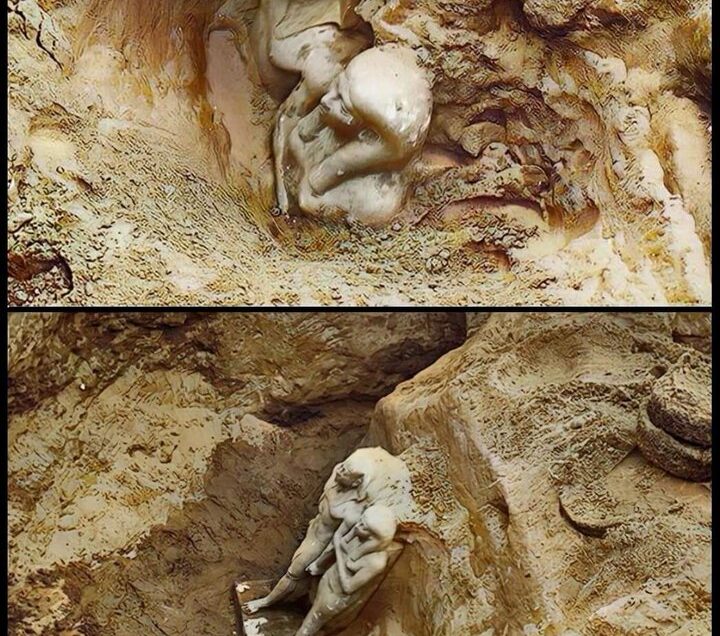Luxor is a place like no other on earth, the sheer size and the numbers of its wonderful preserved monuments have made Luxor Egypt’s greatest attraction after the Pyramids. Luxor, once an Ancient Egyptian capital, is known today as the world’s greatest open-air museum. From the tomb of Tutankhamen in the Valley of the Kings and the magnificent sunset views at the majestic temple complexes of Karnak and Luxor to the exciting and fun Nile cruises.
Luxor has plenty of tourist attractions to keep you occupied for more than three days.
We compiled a list of the top 15 places you have to visit! This list is organized by geographical location. We start with sites on the East Bank of Luxor, of which there are only four. Then, journey across the Nile River to the West Bank and its long list of archaeological sites.
In this article, learn how to plan your visit to Luxor. Find out the best things to do in Luxor, where to stay and more.
Guide To Luxor
- Interesting Facts
- Best Things to Do
- Where to stay
- Day trips Idea
Interests Facts about Luxor
The name of “Luxor” means “Palaces” and it is the premier travel destination in Upper (southern) Egypt and the Nile Valley. The dynastic and religious capital of Middle Kingdom and New Kingdom Egypt. Luxor was the ancient city of Thebes; It became an important center of worship of the god Amon during the New Kingdom.
The River Nile Splits Luxor into two parts: the East Bank and The West Bank.
East Bank the town, the Luxor Temple, the Temple of Karnak, The Museum, Luxor International Airport, trains, Bus to Hurhgada, hotels, restaurants
West Bank the location of the major ruins including Valley of the Kings, the Valley of the Queens, Mortuary Temple of Queen Hashepsuit, Colossi of Memnon and other important sites; the Western Valley ruins, and a few hotels.
Also Read : Affordable 6 Days Tours Around Cairo , Luxor , Edfu , Kom Ombo, Aswan & Abu Simbel
Karank Temple Complex

The Karnak Temple complex is certainly one of the top tourist attractions in Luxor you really cannot miss. It’s so huge, it truly beggars comprehension. It also happens to be one of the most important temples in ancient Egypt.
If that isn’t enough reason to visit, then the gigantic Hypostyle Hall with its forest of ancient columns should convince you. I’m sure you’ve seen pictures on social media already – and yes, it does live up to the hype!

More than a temple is spectacular complex of sanctuaries, kiosks, Pylons, and obelisks dedicated to the Theban Gods and the greater glory of the pharaohs. Everything here is on a gigantic scale.
The Karnak Temple Complex is home to three main temples, several smaller enclosed temples, and a number of outer temples – combining the achievements of many generations of ancient builders over a period of 1500 years. Around thirty different pharaohs contributed to the building process of this site, enabling it to reach a size, complexity and diversity not seen elsewhere. It was after all the New Kingdom’s most sacred site.
Note: There is a sound & light show almost every night.
Luxor Temple

Largely built by the New Kingdom Pharaoh Amenhotep III , the Luxor Temple is a strikingly graceful piece of architecture built on the banks of the Nile.
The grand temple in Luxor sometimes called the “southern sanctuary”, is a must visit while you are in town. It’s not consecrated to a single goddess or cult but is rather dedicated to the rejuvenation of kingship and the royal Ka.
In ancient times, two majestic obelisks were standing in front of it. Only one remains. You’ll find the other on the Place de la Concorde in Paris.Once a year, a big festival was held, that saw a huge procession from Karnak to Luxor. An avenue lined with hundreds upon hundreds of sphinxes connected the two sites.
Note: Make sure to drop by in the evening, when lights illuminate the temple. Seriously one of the best things to do in Luxor at night!
Luxor Museum

About halfway between the Luxor and Karank Temples. This wonderful museum has a well-chosen and brilliantly displayed and explained collection of antiquities dating from the end of the Old Kingdom, mostly gathered from the Theban temples and necropolis.
One of the best places to visit in Luxor is definitely the Luxor Museum. In fact, the wonderful museum is only rivaled by the Egyptian Museum in Cairo. The collection is just so stunning! Especially take note of the 26 outstanding New Kingdome statues in the basement.
Mummification Museum

This is a small, somewhat interesting museum about the mummification process. Not only can you see mummified people but there are also mummified cats, birds, and crocodiles.
West Bank Of Luxor
The West Bank of Luxor in Egypt is even more of an archaeological paradise than the East Bank. The area along the West Bank of the Nile at Luxor contains some of the most important archaeological sites in the world.
What to Bring
You need to bring a torch (flashlight) and, more importantly, plenty of water. Also bring plenty of small changes for Baksheesh (Tip. Tomb and temple guards rely on tips to augment their pathetic salaries. 10 to 20 EGP will be enough for them to either leave you in peace, or to open a door or reflect light on a particularly beautiful painting.
West Bank offers all the following attractions and more:
- Valley of the Kings
- Valley of the Queens
- The Colossi of Memnon
- Mortuary Temple of Hatshepsut (Deir El-Bahari)
- Medinet Habu ( Ramses III Temple)
- Assasif Tombs
- Ramesseum (Ramses II Temple)
- Tombs of the Nobles
- Deir al-Medina (Valley of the Workers)
Valley Of The Kings

The Valley of Kings is the ancient burial ground of many of Egypt’s New Kingdom rulers. A truly impressive site! There, you will find Tutankhamen tomb which was discovered almost intact in 1922. Although the tomb alone is worth a visit, you will have to visit the Egyptian Museum in Cairo to see the treasures Tutankhamen was buried with.

Important Note: Regarding your visit to the valley of the Kings in Luxor, there are several ordinary tombs such as (Ramses II – Ramses III – Ramses IX – Hor Moheb – Merenptah – Ta Wsrt – St Nkht – Thotmosis III, etc.,) ……Each Main Entry Ticket to the Valley of the Kings, gives you access to only 3 of those tombs (depending on the opened ones of them during your visit) …So, you can choose any 3 ordinary tombs to enter, from the allowed to visit during the day of the tour.
And there are another optional tombs, each of them requires extra optional entry ticket such as
- KV 62-Tutankhamun 300 EGP per Person
- KV 9-Ramses VI 100 EGP per Person
- KV17- Seti I 1,000 EGP per Person
Valley Of The Queens

The Valley of the Queens is the place where wives of Pharaohs were buried in ancient times as well as princes, princesses and various members of the nobility.
Important Note: the Tomb that you will see here is smaller and lacks some of the grandeur of the tombs in the Valley of the Kings with one big exception the tomb of queen Nefertari.
Tomb of queen Nefertari’s Ramses II favorite wife is the most famous attraction. The tomb is said to be one of the most beautiful and Spectacular in Egypt.
The level of the detail is amazing and the color are more vibrant that what you can see any tomb in Egypt. Don’t miss it, but it on your list.
Mortuary Temple Of Queen Hatshepsuit

Word’s cannot describe the beauty of the mortuary temple of Hatshepsut on the West bank of the Nile. It is one of the most beautiful sights in Egypt, and certainly in Luxor.
Hatshepsut gained fame as one of the few female Pharaohs in the long history of the ancient Egyptian kingdom. Definitely make sure to have a closer look at the many murals throughout the temple, where her famous expedition to the African kingdom of Punt is displayed.
Colossi Of Memnon

On your way to visit the Valley of the Kings, you will come across the two gigantic statues known as the Colossi of Memnon. These two gigantic figures of Amenhotep III were originally situated in front of his Mortuary temple, which seems to have been destroyed for unknown reasons. Each colossus is about 21 meters tall and represents King Amenhotep III seated on his throne. Legend has it that after an earthquake damaged it in 27 BC, one of the statues emitted strange sounds in the morning-perhaps due to the heat of the sun following the humidity of the night. However, the restoration which took place in 193-211 A.D, made the sound stop forever!
Mortuary Temple Of Ramsses Iii At Medinet Habu

One very impressive mortuary temple that should definitely be on your list of things to do in Luxor, is Medinet Habu. The important New Kingdome period temple of Rameses III has some impressive murals of the battle prowess of the pharaoh.
Walk through the remnants of the workers’ mud brick houses at the rear of the site, and then into the grandness of the temples. Hatshepsut and Tuthmosis III oversaw the building of the original temple of Amun which was later walled in to the complex by Ramses III. The entrance to this temple complex is through the singular Syrian Gate, this large building is particular to Madinat Habu and is carved with giant images of the Ramses III defeating the Libyans.
Private Day Tour Ramesseum Temple,Habu Temple and Nobles Valley
Deir El-Medina (Valley Of The Artisans)

This is the place where the workmen of the royal tombs used to live. Here you will see the Temple of Deir el-Medina, which was dedicated to the goddess Hathor. This is the only temple in all of Egypt where you can admire carvings of the Final Judgment.
Tomb Of The Nobels

There are numerous tombs to visit, One of the most important tombs in this cemetery is tomb 55, which belonged to Ra-Mose. He was the mayor of Thebes during the end of the reign of Amenhotep III (Amenophis III) and his son Akhenaton, the vizier. Unfortunately, this tomb is unfinished because Ra-Mose moved, with Akhenaton, to the new capital Akht-Aton (modern-day Tell El-Amarna), therefore the decoration work stopped, and the tomb was left unfinished, except for the scenes which already had been completed. Also we recommend the tombs of Sennofer and Rekhmire since these are two of the best tombs to visit.
Ramesseum

The mortuary temple of Ramses II took around 20 years to build as a part of his funerary complex. The magnificent temple is on Luxor’s West Bank and in its day the Ramesseum was similar to Abu Simbel in grandeur and Medinet Habu in architecture. Ironically the Nile floods deteriorated the temple in which Ramses is portrayed as an eternal deity. Make sure to notice the images of the Battle of Qadesh in which the pharaoh is shown firing his arrows at the retreating enemy. The colossal statues of Ramses which once stood tall at the entrance are now in ruins but you can still see parts scattered around the temple.
Temple Of Seti I

This temple was began by Seti I and it is dedicated to Amun-RE. Seti I death, the temple was completed by his son Ramses II.
Howard Carter House &The Rebplica Tomb Of King Tut
Howard Carter is the British archaeological who discovered the tomb of Tutankamun in Novemver 1922. He lived in a house on the West Bank of Luxor, above the road from Deir Al- Bahri to the Valley of the Kings.
The house has been restored and decorated with pictures and tools of the excavation. An exact replica of Tutankhamuns burial chamber has been constructed on the edge of the garden along with an exhibition relating to the discovery of the tomb.

For unforgettable sunrise views to see world’s largest open air museum. You can take a hot air balloon flight, one of the most beautiful and inspirational picturesque places on earth. Imagine looking over the great city of Luxor from the sky, imagine taking photos of the sunrise over the Nile, imagine looking over the richest history on earth, Valley of the Kings and imagine the fantastic green landscape.
Hot Air Balloon Ride Over Luxor At Sunrise

Felucca Ride To Banana Island
If you’ve had your fill of temples and tombs for the day, there is no better way to relax in Luxor than to take a felucca ride to Banana Island. Five kilometers upriver from Luxor, this teeny palm-shaded island is the perfect chilled-out contrast to the history-filled treasures of the West and East Bank. Hop on a felucca in the late afternoon after a long day of temple and tomb viewing, and sit back to watch the Nile-side views as the boat captain raises the sail and you slide up the river. If you sail back just on sunset, you’ll get to see the river at its most majestic.
One of the best things to do in Luxor in the late afternoon or early evening is to relax aboard a felucca.
How Much Time Do You Need In Luxor?
How Many Days in Luxor?
The answer is that it all depends on your level of interest in the temples, tombs, museums, daily life, culture etc.
To see and do everything on the list, you will need a minimum of three days. If you have less time, you can still visit the highlights.
You Need Minimum 3 Days to see Luxor’s Main Sites
- Day 1 – arrive in Luxor evening or night time
- Day 2 – West Bank (Valley of the Kings-Hatshepsut Temple- Colossi of Memnon- Queen Nefertari Tomb)
- Day 3 – Abydos/Dendera
- Day 4 – Karnak & Luxor Temples, you might want to leave Luxor in the afternoon or night time if pressed for time.
An Alternative Itinerary for your days in Luxor would be:
- Day 1 – arrive before mid-day and see Karnak & Luxor Temples
- Day 2 – Abydos/Dendera
- Day 3 – West Bank – leave on flight 6pm or later or the night train
The 5 sites you should visit on Luxor’s West Bank are:
- Valley of the Kings
- Hatshepsut’s Temple
- Nobles Tombs (set of two or set of 3 tombs)
- Deir El Medina (the Workers’ Village – 2 pristine tombs)
- Medinet Habu Temple.
Special Tombs on West Bank:
Currently there are 3 special tombs open on the West Bank and perhaps for a limited time. These are definitely worth seeing if you are very interested in seeing the best tombs and ok with paying the extra ticket costs. They are
- Tut-Ankh-Amun (300 LE) in the Valley of the Kings
- Sety I (1000 LE) in the Valley of the Kings
- Queen Nefertari (1580 LE) in the Valley of the Queens
One day program (Itinerary)
Start your day by visiting the West Bank of Luxor, we recommend the Valley of the Kings, the Temple of Queen Hatshepsuit, Medinate Habu, and stop for phot at the Colossi of Memnon.
If you don’t mind the big ticket price, the Tomb of Nefertari in the valley of the Queens is amazing. Relax and enjoy your lunch, in the afternoon, visit Karnak and Luxor Temple.
Two day program (Itinerary)
Split your time between the West Bank and the East Bank. Spend one busy day visiting the West Bank sites and one leisurely day visiting the East Banks Sites
Day Trips Ideas From Luxor
If you have more time in Luxor, you can add on day trips to nearby destinations.
Dendara And Abydos
The Temples at Abydos and Dendera require 1 Full Day
These two temples are the absolute best in Egypt. They are the most intact, most colorful, most mysterious, most exciting and best Temples in Egypt.

The grand necropolis complex of Abydos is one of the oldest necropolises in Egypt and is associated with the first Egyptian capital of Thinis. It was here that kings and high court dignitaries were buried during the 1st and 2nd dynasties, and the rituals of kingly burials were first celebrated to symbolize the transitory and recurrent character of all earthly things. The site is centered round the beautiful Temple of Seti I and is a fine day out from Luxor.
Location: 162 kilometers north of Luxor

TEMPLE OF HATHOE AT DENDARA


Dendera temple is the magnificent House of goddess Hathor, the most-preserved among ancient Egyptian temples.
Walk by several Roman kiosks, pass through the colossal gateway of Domitian and Trajan that is surrounded by a massive mud-brick enclosure and enter into the cavernous hypostyle hall of Tiberius. Visit the best preserved temple in Egypt. See vivid scenes that depict the Roman emperor Trajan paying homage to the Ancient Egyptian goddess Hathor and other mythical reliefs that adorn this gorgeous Graeco-Roman temple.
Location: 76 kilometers north of Luxor
Important Note: It’s a long day trip, can takes up to 10 hours, and much of this time is spent in a car. But if you want to see two spectacular temples, this is well worth your time.
ESANA AND EDFU
From Luxor, journey south along the Nile River to two more temples .The temple of God Khenum at Esan City and the temple of God Horus at Edfu City.

Dedicated to the ram-headed god Khnum (the god of creation) the Temple of Esna construction started during King Tuthmosis III reign during the 18th Dynasty but the temple completed construction during the Ptolemaic period and the Roman period between 40 to 250 A.D. Inscriptions on the temple wall nominate the important figures related to the creation of the Temple of Esna, also known as temple of Khnum.
Location: 56 kilometers south of Luxor
Edfu Temple (Horus Temple)

Temple of Horus, is considered to be one of the most beautiful and preserved Temples in Egypt.
The well preserved Ptolemaic Temple of Horus is the second biggest temple in Egypt. Second only to the Temple of Karnak in sheer size, the temple was one of the last attempts by the Ptolemaic dynasty at building in the style and grandeur of their predecessors. Construction on the site took about 200 years. Well preserved hieroglyphs have shed light on the practices of the cult of Horus and associated temples. The temple is believed to have been built on the site of the great Horus-Seth battle.
Location: 110 kilometers south of Luxor
The East Bank has the vast amount of accommodation; though staying on the West Bank is increasingly popular, particularly if you want to hit the tombs and temples early. But expect more travelling to and from the airport or Train Station.
Luxury Hotels:
The Sofitel Winter Palace is one of Egypt’s most famous historic hotels. Is Luxor’s most famous hotel and it’s oldest. It has lush gardens and pools and one of the top restaurants in town, as well as bags of historic ambience.
The Hilton Luxor Resort & Spa has a wonderful spa, multiple restaurants, and an infinity pool overlooking the Nile.
Mid-Range Hotels:
The Jolie Ville Hotel & Spa – Kings Island is based on a private island on the Nile. There are plenty of resort features with gorgeous grounds, three outdoor pools, tennis courts, and a fitness center.
Steigenberger Nile Palace Luxor has good-value rates, Nile River views, beautiful pools, and nightly entertainment.









